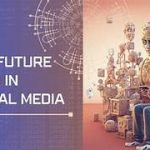The Use of AI in Language Translation and Interpretation
Artificial intelligence (AI) has revolutionized numerous aspects of our daily lives, and language translation and interpretation are no exceptions. From breaking down language barriers to enabling seamless global communication, AI-powered translation tools are reshaping how individuals, businesses, and governments interact in an increasingly interconnected world. This article explores how AI is transforming language translation and interpretation, its benefits, challenges, and the future it envisions for global communication.
How AI Transforms Language Translation
AI has brought unprecedented advancements in language translation through innovative technologies such as machine learning (ML), neural networks, and natural language processing (NLP). These technologies have made translation tools faster, more accurate, and more accessible than ever before.
1. Machine Translation
Machine translation (MT) is one of the most prominent applications of AI in this field. AI algorithms analyze and translate text from one language to another, often achieving remarkable accuracy. Popular tools such as Google Translate, DeepL, and Microsoft Translator utilize neural machine translation (NMT) models that process entire sentences rather than individual words, ensuring contextually accurate translations.
2. Real-Time Interpretation
AI-powered interpretation devices and applications enable real-time language translation during conversations. Tools like Google Pixel Buds and Microsoft’s Skype Translator allow individuals speaking different languages to communicate seamlessly, whether in business meetings or while traveling.
3. Cultural Nuance Recognition
Advanced AI systems are now capable of understanding and incorporating cultural nuances into translations. By analyzing linguistic and cultural context, AI ensures that translations are not only literal but also culturally appropriate, reducing the risk of miscommunication.
4. Text-to-Speech and Speech-to-Text Translation
AI enables text-to-speech (TTS) and speech-to-text (STT) translations, making it possible for users to convert spoken language into text and vice versa. This technology is especially useful for accessibility tools and for people with hearing or speech impairments.
Benefits of AI in Language Translation and Interpretation
AI has revolutionized the way we approach language barriers. Here are some key benefits of integrating AI into translation and interpretation:
1. Accessibility
AI-driven translation tools make multilingual communication accessible to a broad audience. They are available as free or low-cost apps, ensuring that people from diverse backgrounds can benefit from advanced translation capabilities.
2. Speed and Efficiency
AI systems can process and translate vast amounts of text almost instantly, which is invaluable in scenarios like international business, emergency response, and diplomatic communications.
3. Cost-Effectiveness
Compared to hiring human translators or interpreters, AI-powered tools provide a more affordable alternative, especially for smaller businesses and individuals.
4. Improved Accuracy
Modern AI systems continuously improve through machine learning. Over time, they adapt to user inputs, regional dialects, and linguistic nuances, offering increasingly accurate translations.
5. Global Connectivity
By breaking down language barriers, AI fosters global collaboration, enhances cross-cultural understanding, and supports international business expansion.
Challenges and Limitations
Despite its remarkable advancements, AI in language translation and interpretation is not without its challenges. These limitations highlight areas where further development is needed.
1. Contextual Misinterpretation
AI systems often struggle with understanding idiomatic expressions, slang, or phrases that have multiple meanings. Misinterpretations can lead to errors, particularly in critical fields like legal, medical, or technical translations.
2. Cultural Sensitivity
While AI has improved in recognizing cultural nuances, it is still prone to overlooking subtle cultural or social contexts. This can lead to translations that, while technically correct, may be inappropriate or offensive in certain settings.
3. Dependence on Data Quality
The effectiveness of AI translation tools heavily relies on the quality and diversity of their training data. Biased or incomplete datasets can result in translations that favor certain languages, dialects, or demographics over others.
4. Security and Privacy
The use of AI in language translation often involves the processing of sensitive information. Ensuring the privacy and security of user data is a significant challenge, particularly for cloud-based translation services.
5. Human Touch in Interpretation
AI lacks the emotional intelligence and cultural understanding of human interpreters. In situations requiring empathy, negotiation, or nuanced communication, human expertise remains irreplaceable.
Real-World Applications
AI-driven translation and interpretation tools have a wide range of applications across various industries:
1. Business and Commerce
Companies use AI to communicate with international clients, negotiate contracts, and expand into new markets. Tools like DeepL and localized marketing platforms ensure businesses can effectively reach diverse audiences.
2. Healthcare
AI translation aids medical professionals in communicating with patients who speak different languages, improving healthcare accessibility and patient outcomes.
3. Education
Language learning platforms like Duolingo and Babbel leverage AI to provide personalized learning experiences. AI also enables students and educators to access resources in multiple languages.
4. Travel and Tourism
AI-powered translation apps and devices enhance travelers’ experiences by breaking down language barriers, making navigation, dining, and interactions more seamless.
5. Government and Diplomacy
Governments use AI translation tools to engage with citizens and collaborate internationally. For example, the United Nations uses AI systems to translate speeches and documents into multiple languages in real time.
The Future of AI in Language Translation
The future of AI in language translation and interpretation looks promising, with continued advancements poised to address current limitations. Here are some anticipated developments:
1. Enhanced Accuracy through Multimodal AI
Future AI systems will integrate text, audio, and visual data to provide more accurate and context-aware translations. This will improve performance in complex scenarios like video conferences and multilingual meetings.
2. Ethical AI Development
Efforts to reduce bias and improve inclusivity in AI training datasets will ensure more equitable translation outcomes, particularly for underrepresented languages and dialects.
3. Integration with Wearable Technology
AI translation will become more seamless with the rise of wearable devices, such as smart glasses and earpieces, that provide real-time translations directly to users.
4. Customized AI Models
Businesses and individuals will be able to create personalized AI translation models tailored to specific industries, regions, or contexts, ensuring higher relevance and accuracy.
5. AI-Human Collaboration
The future will likely see greater collaboration between AI and human translators. AI will handle repetitive or straightforward tasks, while humans focus on complex, sensitive, or creative aspects of translation.
Conclusion
AI has fundamentally transformed language translation and interpretation, offering unparalleled speed, accuracy, and accessibility. While challenges remain, ongoing advancements in AI promise to overcome these hurdles, paving the way for a future of seamless global communication. By fostering collaboration between AI and human expertise, we can ensure that language no longer serves as a barrier but as a bridge connecting people, cultures, and ideas worldwide.


